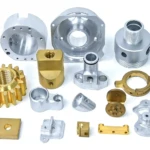As our communications become wireless, the Internet explodes, and aerospace applications multiply, the need for efficient, lightweight antennas becomes urgent.5G and 6G accelerate this process, and industry players must find solutions to produce faster and better while reducing costs. Faced with these challenges, additive manufacturing, through its flexibility and its producible geometries, can provide answers. At least that’s what a research team led by Rayne Zheng, associate professor in the Department of Materials Science and Engineering at Berkeley, is doing. They have developed an additive manufacturing platform capable of designing complex antennas as quickly as possible.
A recent study published by Mordor Intelligence shows that the antenna market is expected to reach $34.24 billion by 2029, growing at an annual rate of 7.8% during the analysis period (2024-2029). We know there are more of them because they are necessary for communication. These components are found in virtually all radio devices capable of transmitting and receiving energy in the form of electromagnetic waves. We are talking here about the Internet of Things, 5G and 6G, certain satellite communications, etc. These components must be as small and light as possible while remaining efficient and fast. Most often, they are manufactured by machining, but 3D technology is gaining ground, in particular thanks to the integration of lattice structures making it possible to considerably reduce the final weight of the antenna.

With three layers of interpenetrationPhase gradient emission grating made of S-ring and dielectric material (Photo credit: X.Cheng)
antenna and3D printing
The use of additive manufacturing to produce antennas has certain limitations. The processes that currently exist on the market do not allow the mixing of certain materials– You generally have to choose between an all-dielectric or all-metal antenna. Some applications cannot therefore be executed. Where they can be mixed, they must go through very tedious post-processing steps or journeys through tools and substrates, making it difficult to fully utilize additive manufacturing. Overall, current solutions are not enough.
So, faced with this observation, Zheng and his team developed a new3D printing platform. “We use multi-material programmed 3D printing as a versatile, versatile platform for the rapid production of almost any type of 3D antenna system,” he explains. What do they actually do? This is called charge-programmed deposition (CPD), and it is a process that controls the polarity of charges through multi-material printing of photomonomers. The team used stereolithography to deposit photopolymers in different locations, forming a sort of 3D mosaic. These photopolymers will attract the metal ions deposited on the 3D structure by metal plating in a second step. This allows control over the final antenna design.
The team added:“CPD can realize virtually any complex 3D structure, including complex lattices, and has demonstrated nearly complete conductivity from copper deposition, as well as magnetic materials, semiconductors, nanomaterials and combinations of the latter. She plans to make a complex antenna.” but wants to go further, with the aim of making the manufacturing process faster and simpler.
Daguang focuses on providing solutions such as precision CNC machining services (3-axis, 4-axis, 5-axis machining), CNC milling, 3D printing and rapid prototyping services.
















